
-
Find the right food for your petTake this quiz to see which food may be the best for your furry friend.Find the right food for your petTake this quiz to see which food may be the best for your furry friend.Featured products
 Adult Wet Dog Food with Beef
Adult Wet Dog Food with BeefHill's Science Plan Adult Multipack Wet Dog Food with Chicken, Beef & Turkey are complete premium pet foods for adult dogs from 1 year. Your dog will love these deliciously smooth and savoury minced loaves, formulated for balanced nutrition and overall health.
Shop Now Puppy Food
Puppy FoodHill's Science Plan Puppy Multipack Wet Dog Food with Chicken & Beef are complete premium pet foods for growing puppies from weaning until 1 year old and for pregnant and nursing dogs. Your puppy will love these deliciously smooth and savoury minced loaves, formulated for balanced nutrition and overall health.
Shop Now Mature Adult Dog Food
Mature Adult Dog FoodHill's Science Plan Mature Adult Multipack Wet Dog Food with Chicken & Beef are complete premium pet foods for mature adult dogs from 7 years. Your dog will love these deliciously smooth and savoury minced loaves, formulated to deliver the appropriate amount of energy to support the needs of adult dogs.
Shop NowFeatured products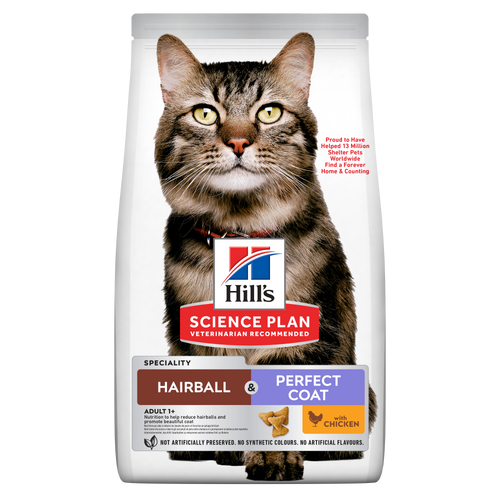 Hairball & Perfect Coat Adult Dry Cat Food with Chicken
Hairball & Perfect Coat Adult Dry Cat Food with ChickenHill's Science Plan Hairball & Perfect Coat Adult Cat Food with Chicken is formulated to effectively help avoid hairball formation in adult cats while promoting a beautiful coat. Thanks to its mix of essential omega-6 fatty acids, this food benefits the cat's skin and fur, keeping them healthy and shiny. Our Advanced Fibre Technology helps reduce hairballs by naturally promoting their passage through the gut. This food is formulated with high-quality protein for a perfectly balanced, great-tasting recipe.
Shop Now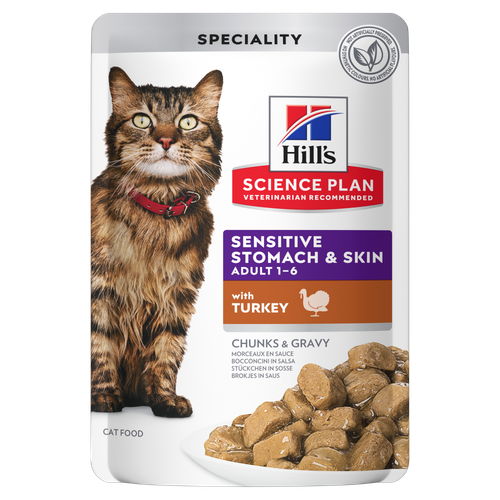 Sensitive Stomach & Skin Adult Cat Food
Sensitive Stomach & Skin Adult Cat FoodHill's Science Plan Sensitive Stomach & Skin Adult Wet Cat Food with Turkey is a complete pet food for adult cats, aged 1–6 years. This highly digestible wet food comes in a pouch and supports healthy digestion, as well as nourishes skin and promotes a thick and lustrous coat.
Shop Now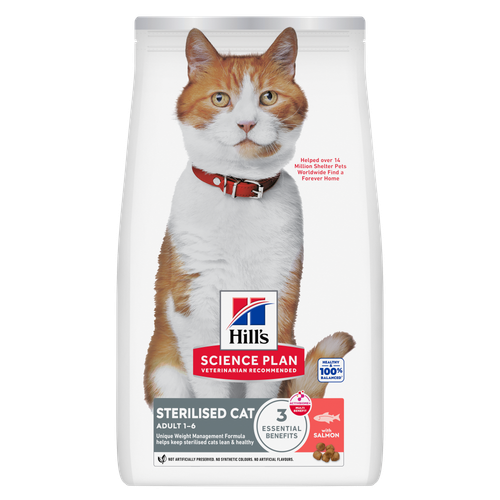 Sterilised Adult Cat Food
Sterilised Adult Cat FoodHill's Science Plan Adult Sterilised Cat Dry Food with Salmon is specially formulated with ActivBiome+ Multi-Benefit Technology. It is a precisely balanced nutrition, tailored to meet the needs of sterilised cats, to help keep them lean & healthy.
Shop Now -
Dog
- Dog Tips & Articles
-
Health Category
- Weight
- Food & Environmental Sensitivities
- Urinary
- Digestive
- Joint
- Kidney
-
Life Stage
- Puppy Nutrition
- Adult Nutrition
- Senior Nutrition
Cat- Cat Tips & Articles
-
Health Category
- Weight
- Skin & Food Sensitivities
- Urinary
- Digestive
- Kidney
-
Life Stage
- Kitten Nutrition
- Adult Nutrition
Featured articles Show some love with wet foods: a great choice for pets with health issues
Show some love with wet foods: a great choice for pets with health issuesShow some love with wet foods: a great choice for pets with health issues.
Read More The Incredible Science Behind Your Pet's Microbiome
The Incredible Science Behind Your Pet's MicrobiomeLearn what your pet's microbiome is, how it contributes to your pet's gut and overall health, and why nutrition is important in maintaining healthy microbiomes.
Read More The Right Diet For Your Pet
The Right Diet For Your PetIn people, the right diet is very important. If you are eating the wrong way for your metabolism, activity level, age and lifestyle you could end up with health issues.
Read More -


It's a familiar scene: you hear a rustling from another room, and when you peek in to investigate, you see your feline friend chewing on a plastic bag, again. You're probably wondering why your cat likes to eat plastic and how you can divert your kitty's attention away from the potential dangers that go along with it.
Why Plastic?
Why does my cat try to eat plastic bags? Essentially, because they like it. Plastic bags appeal to your cat's senses for a variety of reasons: the crinkle of the plastic, the smell of the food that was contained in it wafting through the air, the smooth surface under their paws. It's a full sensory experience for your little pal.
Kitties also find plastic bags especially alluring, explains the Pet Health Network, because "many bags are also coated in substances such as cornstarch, [and] stearates (salts of stearate acid), or are made of animal by-products such as gelatin, which makes them attractive to cats." Your cat sees a plastic bag and thinks, "Oh, look, a treat!"
Likewise, your cat may chew on bags and other, harder plastic objects, such as straws and milk jug rings, to alleviate anxiety caused by environmental or medical stressors. These can be anything from moving to a new home, a new pet or a new baby in the house, or even illness and ageing.
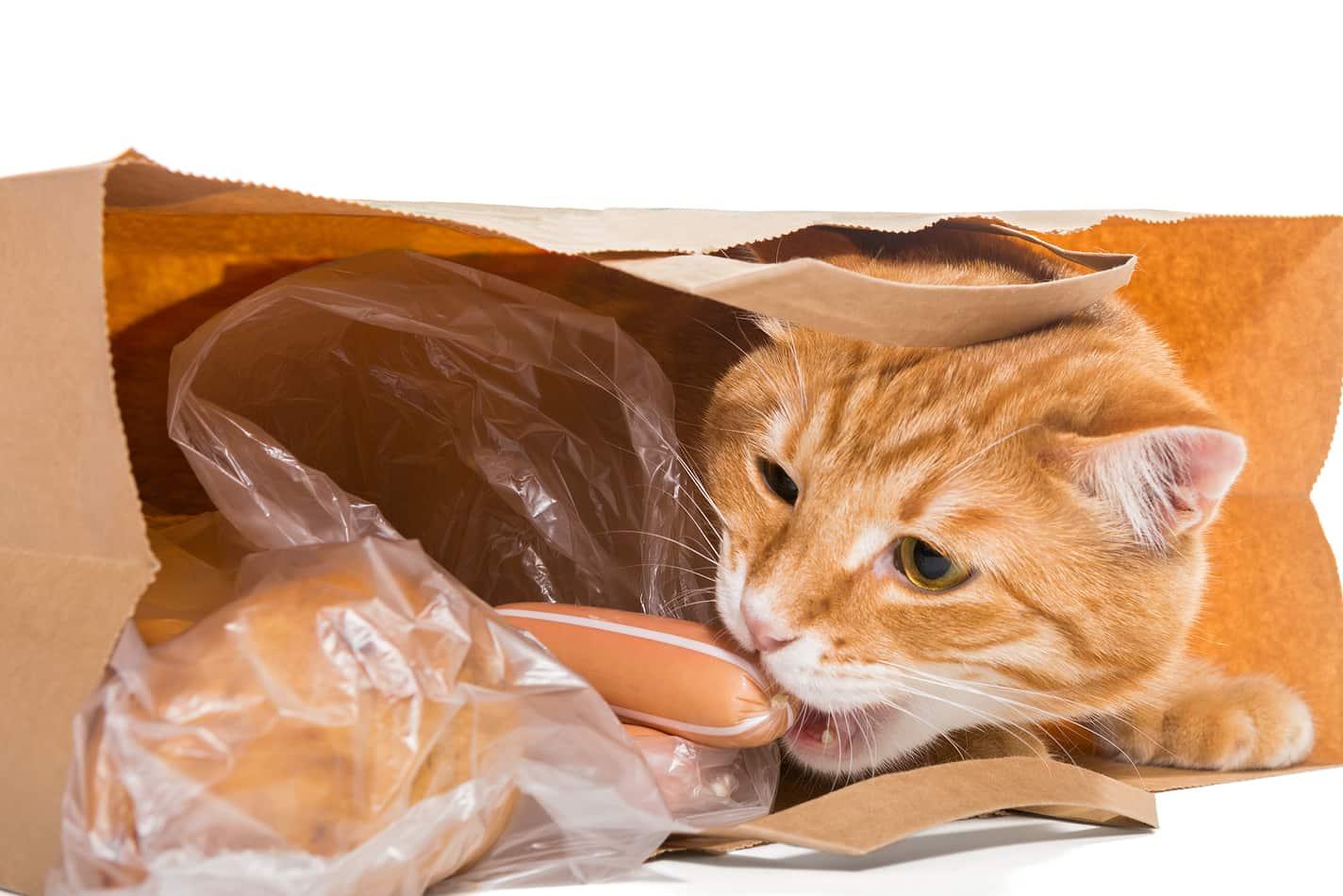


Tasty Tips
Safety and Prevention
Cats and plastic bags are a potentially dangerous combination for a few reasons. In addition to swallowing a foreign object that may obstruct their airway or cause intestinal distress, your cat could get the plastic handles wrapped around their neck, which could cut off their breathing.
The safest way to prevent these types of accidents is to keep plastic bags out of your cat's reach at all times. Stash extra bags in a closet, the garage, or another cat-free space. This may not be an option, however, if you use the bags to line rubbish cans or even their litter box (although you probably don't have to worry about them chewing on a little pan liner because since most healthy cats do not associate their litter box with snack time). If you can't close off the room with the rubbish can, invest in a can with a lid that you can tuck the bag under. They can't chew on it if they can't reach it. This motto goes for other harmful playthings, including electrical cords.
If you suspect that something beyond sensory satisfaction is going on, make an appointment with your veterinarian to find out more about the burning question of why your cat is eating plastic. They can rule out any underlying medical conditions such as pica, a disorder that causes animals to eat non-food items such as plastic, rubber, or fabric, says the Animal Behavior College. Pica also could indicate a more serious illness, like feline leukaemia. So, it's a good idea to get your kitty checked out as soon as possible.
Plastic Alternatives
Separating cats and plastic bags is achieved by stealth diversion tactics. If removing the alluring object from their reach isn't an option, offer them something more desirable. Stimulate their senses with toys like food puzzles or ball mazes. Because their hunting instinct runs deep, they will appreciate soft cat toys that they can chase around the house. Many cats also appreciate dog toys, particularly the sturdy, durable stuffed animals.
Another option to break up cats and plastic bags is to give your feline pal their own safe chewing spot. Create an area where they can chew on cat treats or toys to their heart's desire. Having their own garden is a healthy, fun alternative to unhealthy and potentially dangerous plastic.
Cat parents can add eating plastic to the list of weird cat behaviours . It's their idiosyncrasies that make kitties so lovable. Just make to discourage snacking on plastic, curb the behavior with safer alternatives, and visit your vet to get to the bottom of their chewing habits.


Christine O'Brien is a writer, mom, and long-time cat parent whose two Russian Blues rule the house. Her work also appears in Care.com, What to Expect, and Fit Pregnancy, where she writes about pets, pregnancy, and family life. Find and follow her on Instagram and Twitter @brovelliobrien.
Related products
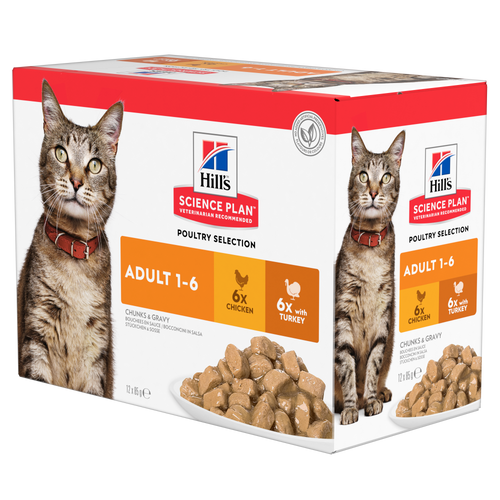

Tender chicken chunks in gravy for cats, with L-carnitine and fewer calories for ideal weight management. Packed with high-quality protein, omega-6s, and vitamin E for shiny fur and healthy skin.

Tender chicken chunks in gravy for mature adult cats. Made with easy-to-digest ingredients, high-quality protein for lean muscle maintenance and antioxidant vitamins C+E for optimal health.

Tender chunks in gravy for cats, with high-quality protein to maintain lean muscle. With vitamin E and omega-3s & -6s for healthy skin and balanced minerals to support healthy vital organs.
Related articles
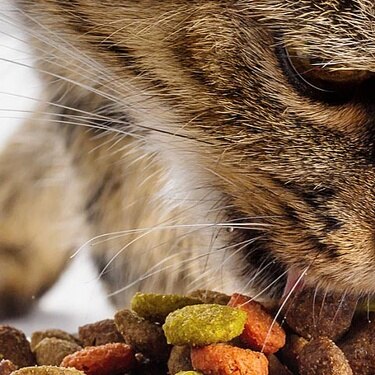
From essential vitamins & minerals to different types of meat, learn what to look for when choosing the best cat food for your feline.
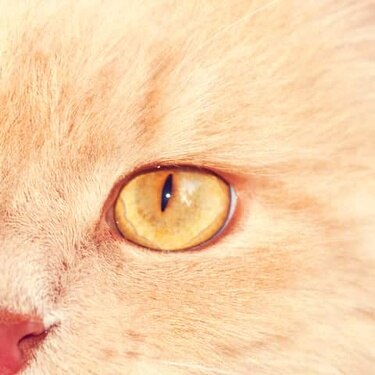
Chocolate is known to be poisonous for dogs, but it can also be toxic for cats. Learn why chocolate is bad for cats & what to do if she's eaten it.
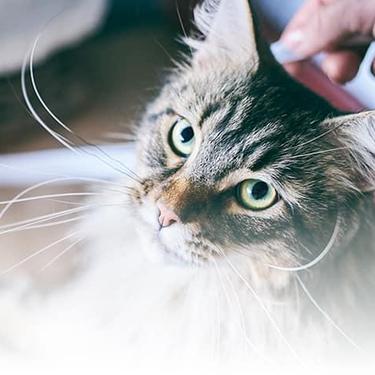
Learn how to make homemade cat treats that are healthy for your pet with this recipe from Hills Pet Nutrition.

There are three common ways to feed a cat. Each way has its advantages and disadvantages.

Put your cat on a diet without them knowing
Our low calorie formula helps you control your cat's weight. It's packed with high-quality protein for building lean muscles, and made with purposeful ingredients for a flavourful, nutritious meal. Clinically proven antioxidants, Vitamin C+E, help promote a healthy immune system.
Put your cat on a diet without them knowing
Our low calorie formula helps you control your cat's weight. It's packed with high-quality protein for building lean muscles, and made with purposeful ingredients for a flavourful, nutritious meal. Clinically proven antioxidants, Vitamin C+E, help promote a healthy immune system.

